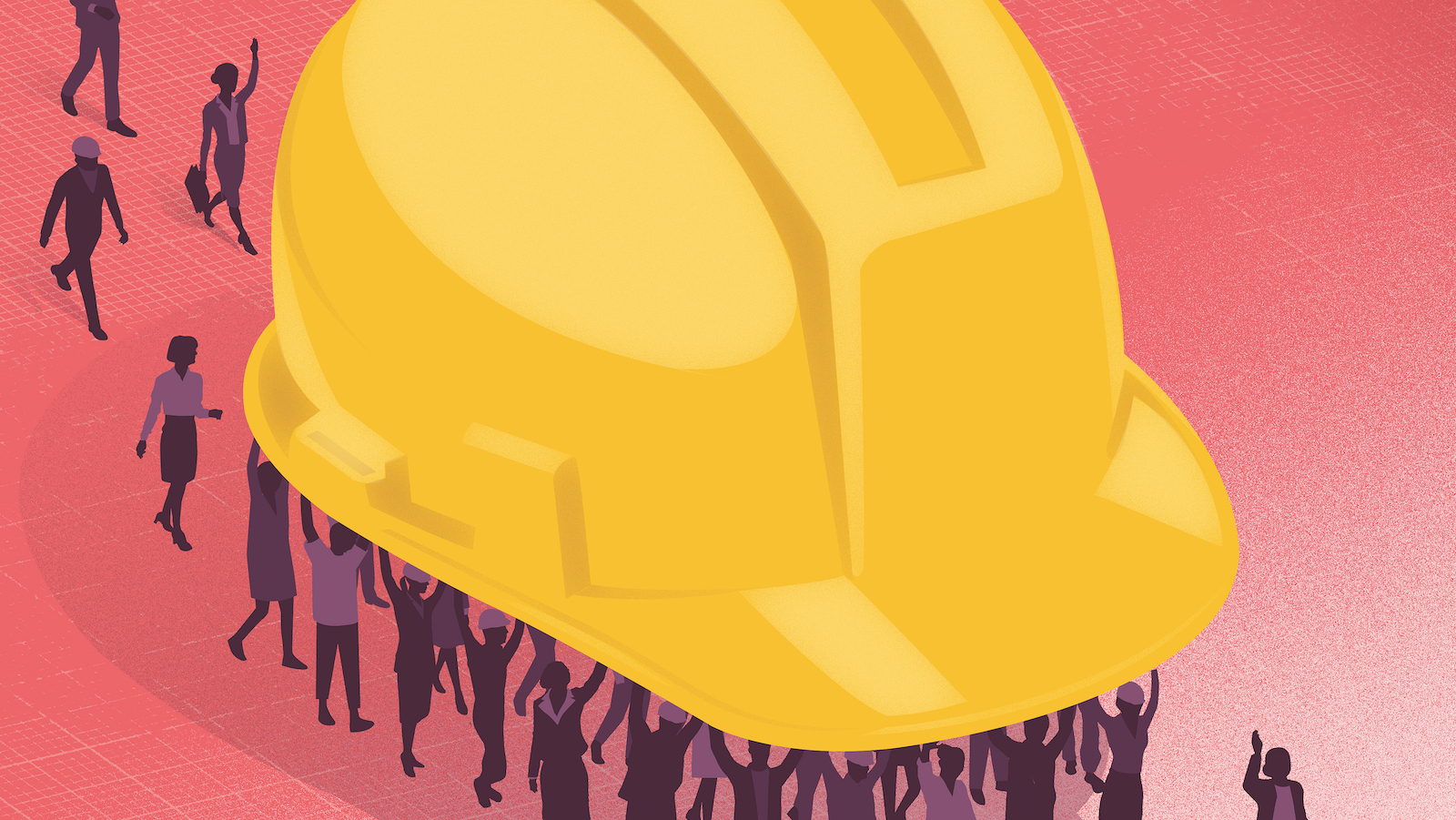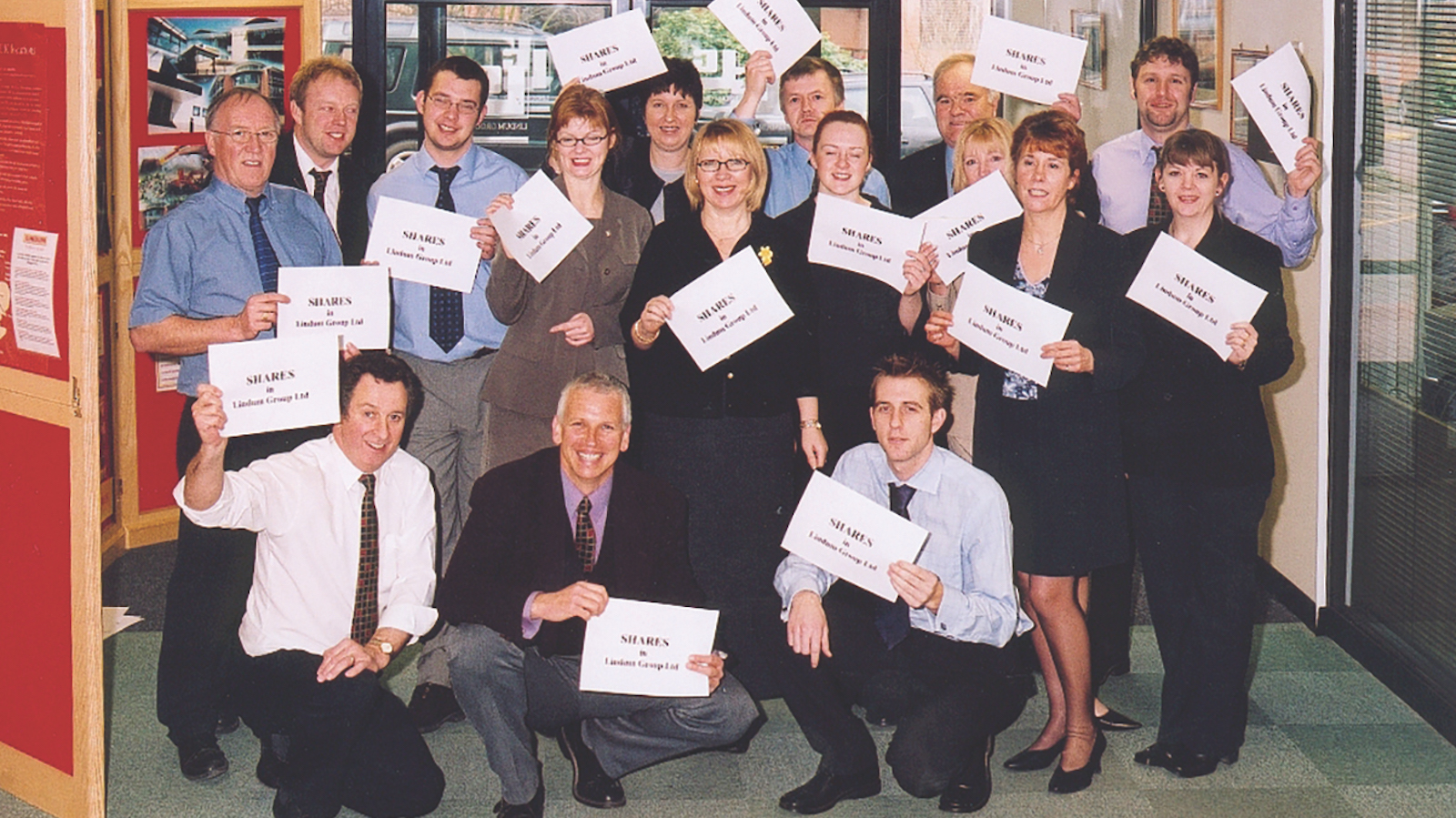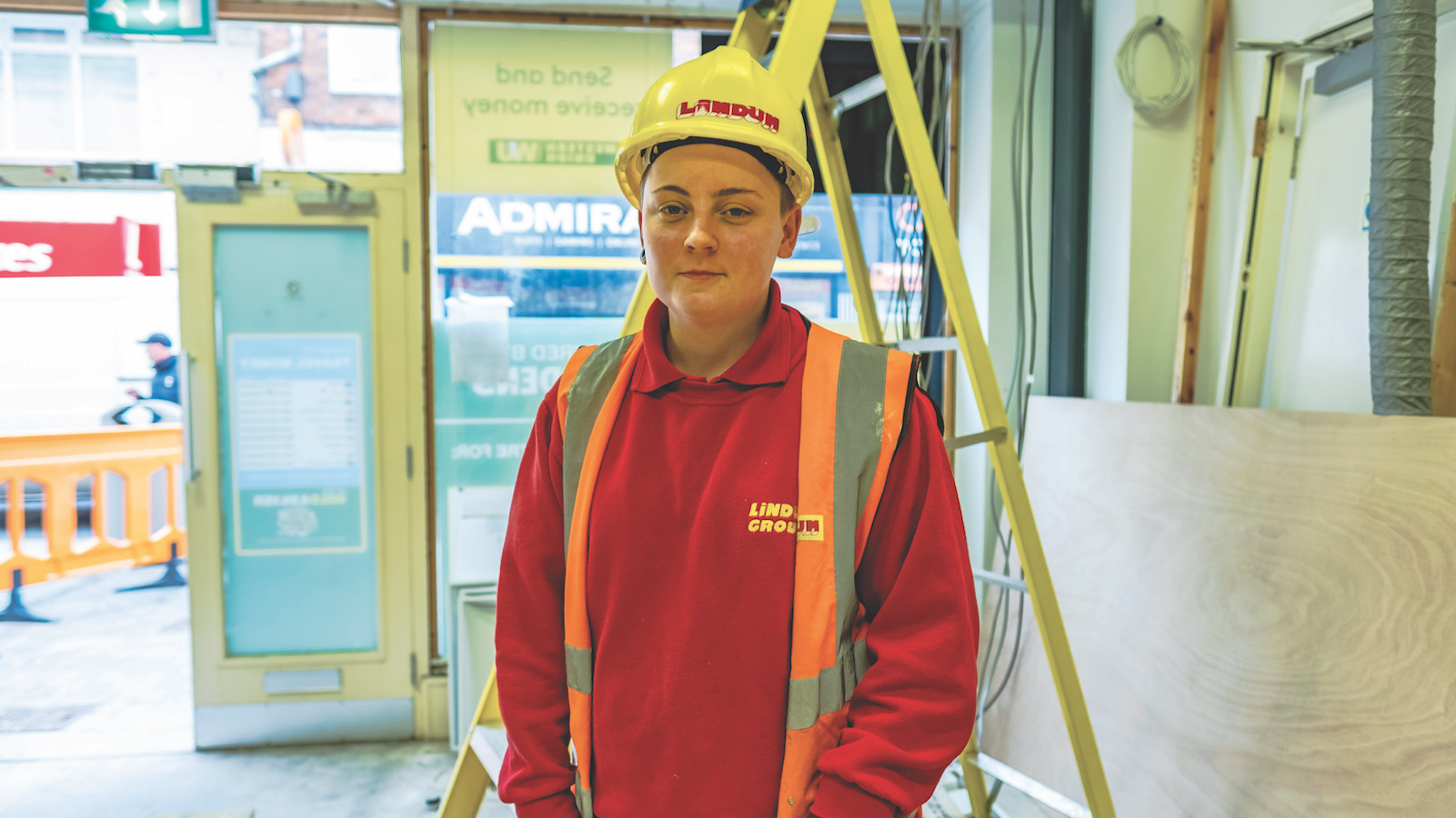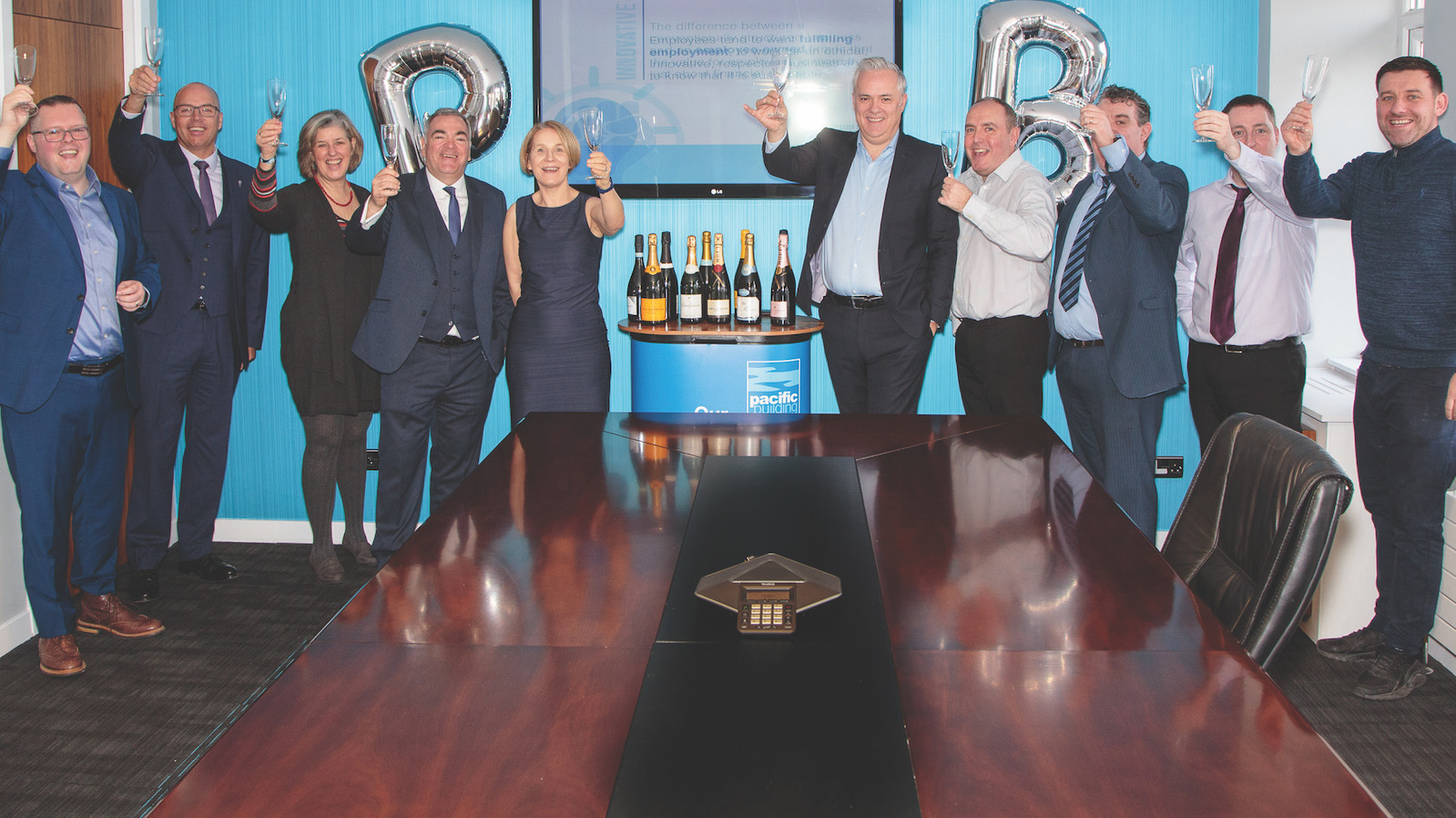More construction companies are moving to an employee ownership model. Neil Gerrard asks what benefits it can bring to employees and employers alike

Steel saws rarely used to last long on construction firm Lindum Group’s sites. They would disappear without explanation, costing £1,000 a time to replace.
In just one year, a total of 29 of the saws went missing from Lindum sites, leaving the firm with a hefty bill. Two years later, however, that figure was down to just one.
What changed? It wasn’t as a result of new security measures or the dismissal of a light-fingered employee. Instead, the business decided to take the route to employee ownership and that led to a major shift in mindset among workers, many of whom had since become shareholders.
The three main forms of employee ownership
Employee ownership can take one of three forms:
● Direct employee ownership – using one or more tax-advantaged share plans, employees become registered individual shareholders of a majority of the shares in their company;
● Indirect employee ownership – shares are held collectively on behalf of employees, normally through an employee trust;
● Combined direct and indirect ownership – a combination of individual and collective share ownership.
Source: Employee Ownership Association
While Lindum was an early convert to the model, making the switch back in 1994, it is comparatively rare among contractors. Architecture practices and big consultants like Arup, Mott MacDonald and Rider Levett Bucknall have embraced the concept, but only recently have more construction firms adopted this ownership model.
Last month, utility contractor Falco switched to an employee ownership trust, demolition firm McGee made the same move in May 2020, while Glasgow-based Pacific Building – a CIOB chartered building company – set one up in January 2019.
For Pacific founder Brian Gallacher, what prompted the decision to make a change was the need to put a succession plan in place. But it has delivered other benefits too.
He explains: “The first thing I knew of employee ownership was when a subcontractor of ours who operates in the retail sector said he was doing it. He explained how it worked and I looked into it because as I pass my 60th year I do have to consider a succession plan.
“The concern the directors, staff and I had was how do we make sure that the business retains the philosophy, culture and values if there was a change in management, particularly if the company was acquired by a business that didn’t share those values?
“Employee ownership seemed the most seamless and simplest route to maintaining some kind of legacy.”

In Pacific’s case, setting up employee ownership took just over two years.
“I had a good look at the possible downsides and went to the Employee Ownership Conference in Birmingham and met people who were at various stages of the process. The harder I looked at it, the more appealing it became to me,” Gallacher recalls.
He expected some employees to be suspicious of his motives and while he did meet some cynicism, it was short-lived. “When I announced it to the team here, a lot of them thought it was a really good opportunity and the majority quickly got it,” he says.
Changing attitudes
Once the trust was in place and employees felt they had a stake in Pacific, Gallacher spotted an immediate shift in how employees viewed their job.
“There was a step change in some people’s attitudes and that was what I really wanted. People who came in every day and treated it as just a job suddenly realised it was a bit more than a job. They wanted this business to be successful and for clients to love us. There has been a real improvement in productivity.”
“We hoped that by encouraging people to buy into the company, employees would be more likely to feel involved further”
The sudden reduction in missing steel saws a quarter of a century ago was due to a similar shift in attitude, says David Chambers, chairman of Lindum Group, which operates out of offices in Lincoln, Peterborough and York. Lindum’s decision to set up an employee ownership scheme followed completion of a complicated project.
“With hindsight, we felt some of the problems we encountered during the contract may have been avoided had there been a deeper level of pride, ownership and commitment among employees,” he says. “We hoped that by encouraging people to buy into the company, employees would be more likely to feel involved further and this has been an important factor in our success ever since.”
The company, which started life as a family-owned business 65 years ago, now has 480 employee shareholders – around two-thirds of the workforce – and is managed by a board of directors, who also own shares.
The process to establish employee ownership took a few months and Chambers says the main challenge was communicating the concept. “Employees needed to understand why we were suggesting they should become a partner in the business. We needed to be clear on the reasons, the potential benefits and, of course, the potential pitfalls,” he explains.

“In the beginning, we invited senior staff to buy shares and then we gave away free shares to every employee. This helped to embed the system and encouraged people to continue their investment. As personnel changes, being clear on the reasons for doing it remains a priority even today.
The difference is that now we have real-life examples of how the shares scheme works and how it can be beneficial to them.”
Company strategy
Under an employee ownership trust model, Gallacher and his management team still make all of the decisions about company strategy at Pacific. The shareholding is held by a trust so none of the employees has individual shares.
“I think there is also a camaraderie and a togetherness that perhaps might not have existed in its fullest extent pre-employee ownership”
“The official status of the employees is that they are beneficiaries of the trust. The trust can make awards based on profitability to each beneficiary or employee should the business have a good year,” says Gallacher.
The firm’s trustee board is made up of five people – two employee representatives and two management representatives, as well as one independent. The management team meets with the trust a couple of times a year to tell the trust how it plans to run the business. The trustees can interrogate the management team’s decisions but can’t prohibit it from making decisions.
“But if all of the board of directors were to suddenly say they were going to buy themselves Ferraris, I would fully expect the trustee board to say that they don’t think it is a good use of company money,” adds Gallacher.

At Lindum, Chambers says the approach to decision-making is “the best argument wins”. He says: “Lindum Group is one company made up of several divisions. Each division has its own directors and management structure. Each of these work with their teams to determine the direction of their business within the group plan. Divisions manage their own business development, with the support of central resources, and all employees are encouraged to see potential business opportunities.
“We also have an annual AGM to which all employees are invited. This is an opportunity to discuss the business and ask questions directly of its board of executive directors.”
Negotiating the pandemic
The unpredictable, volatile environment that has been created by the covid-19 pandemic has hit nearly every sector of the economy hard, and construction has been no exception. But Gallacher thinks the employee ownership model is a useful one to have when it comes to negotiating tough conditions.
Employee-owned construction companies
Pacific Building Main contractor
Lindum Group Main contractor
McGee Demolition contractor
Erith Demolition contractor
Falco Utility contractor
Raised Floor Solutions Flooring contractor
“Employee ownership wouldn’t make a bad business good, but it helps a good business be better and stronger,” he says. “We had some good cash reserves which will continue to help us, because we are obviously burning a bit of cash at the moment.
“Had there been a management buy-out or a trade sale it would probably have sucked all the cash out and we would likely be operating on an overdraft. I think there is also a camaraderie and a togetherness that perhaps might not have existed in its fullest extent pre-employee ownership.”
Chambers agrees that employee ownership helps Lindum to handle obstacles. “If we save more money, by delivering good client service or being careful how we spend money and looking after our kit, then our shares will perform better,” he says.
“In terms of the pandemic, our sites were able to reopen quite quickly provided they abided by strict regulations. Our employees understood that it was in everyone’s best interest to be back in action swiftly but without compromising on social distancing and hygiene.”
Gallacher certainly has no regrets. He says: “It won’t work for everyone but I know that I have done the right thing.”
Comments
Comments are closed.










Around 10 years ago Caroline Murphy, who was on the Murphy Board of Directors, wanted to change the group into an employee-owned organisation. She was voted down by the family, and subsequently left the company. A great shame as she was an extraordinarily talented engineer, and very personable. She was very much her father’s daughter (John Murphy). I worked for the company for 37 years, and had the pleasure of knowing them both.